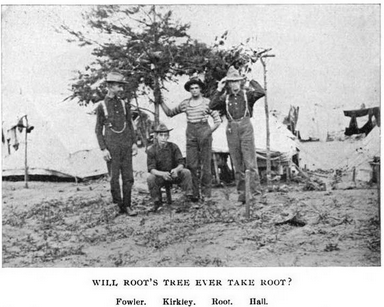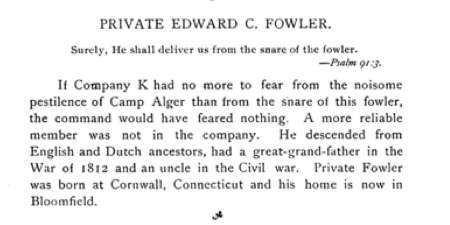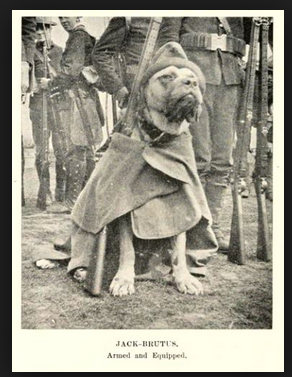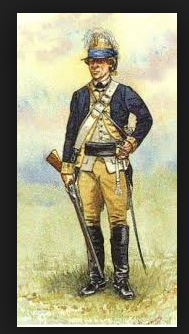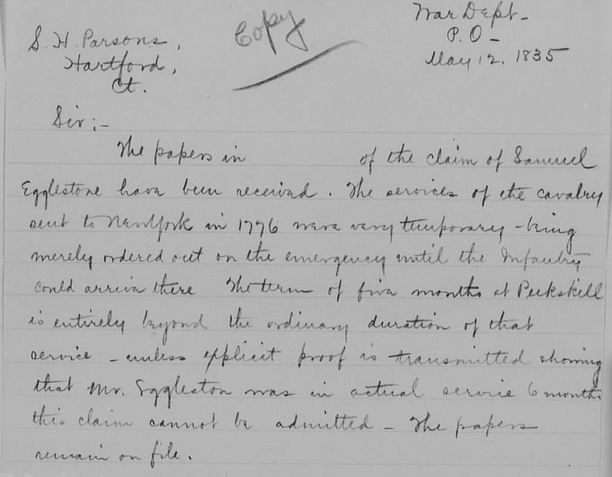Pvt. Edward Fowler
On April 25, 1898 the United States declared war on Spain following the sinking of the Battleship Maine in Havana harbor on February 15, 1898. A quest for adventure and patriotism spurred over three thousand four hundred men Connecticut men to enlist. The First Connecticut Volunteer Infantry was mustered into service between May and July 14, 1898 and mustered out, without having set foot on foreign soil, on October 31, 1898 in Hartford, CT.
Edward C.
Fowler, my paternal second great-uncle, served as a Private in Company K of the
First Connecticut Volunteer Infantry. The story might had ended there had I not
found a history of Company K written by George B. Thayer. A history that
is rich in stories, quirky biographies and photographs. The history even
includes a short story penned by Edward entitled, Among the Recruits (p.121),
in which he writes:
One of the
red letter days in our military experience was the one in which we began to
learn the manual of arms. We soon discovered that it was easy to learn the
different movements,but, we had to apply the old adage,” Practice makes
perfect,” to the work. We would think we were doing finely until Captain
Saunders would come and watch us drill, when we soon found how far from perfect
we were.
After boot
camp in Portland, Maine the 1st Connecticut was stationed in Northern Virginia
and they struck camp in East Falls Church (Dunn Loring/Merrifield), only a few
miles from where I currently reside! Below are a couple of excerpts from
Private George B. Thayer:
Friday,
August 26, 1898 – Up at 5 am. After breakfast we
set fire to the arbor, which for so many days has kept the sun’s heat from us,
applied a torch to the kitchen struck camp and at 9.30 left the old cornfield for
good we hope. The route to East Falls Church was by Dunn Loring and alongside
the tracks part of the way and part of the time along the highway.
Monday,
August 29, 1898 – Corporal Gruener and I took the trolley for Washington at 9
o’clock and went by boat to Mount Vernon. Returning at 2 we visited the capitol
and congressional library and got back to camp at 6:30 p.m. The heat was
intense.
Edward C. Fowler returned back to civilian life, working as a farmer in Bloomfield, Connecticut until his death in 1929.
Jack Brutus, Connecticut War Dog – Who Knew?
… that
although Jack Brutus’s military status was unofficial, he became the official
mascot of Company K of the First Connecticut Volunteer Infantry during the
Spanish-American War.
Jack Brutus,
or “Old Jack” as he became known, was born in Cumberland, Maine, in 1891. He
led an exciting life even before his stint in the military as part of Company K
of the First Connecticut Volunteer Infantry. According to Private Thayer, Jack
“had friends in most of the cities in New England through his associations with
the traveling public at the West End Hotel in Portland. Frequently he visited
them in their own homes, taking passage in some steamer or boarding some train,
and returning to Portland in due time.” In his travels, Thayer claims Jack
Brutus visited Boston, New Brunswick, and New York, as well as many other
cities on the steamer lines.
Old
Jack Enters the Military
Company K
first met Old Jack while stationed at Fort Preble in Portland, Maine, in May of
1898. Jack quickly became a favorite of the soldiers and, eventually, the
company’s official mascot. He went on to travel with the unit as they encamped
up and down the Eastern Seaboard providing coastal defense during the
Spanish-American War.
Jack was a
large breed dog and often had health issues throughout his service with Company
K. During a heat spell at Camp Alger near Falls Church, Virginia, Jack had
trouble breathing and suffered in the heat. Thayer noted, “Poor Jack—the noble
mastiff we brought from Portland is suffering from the heat extremely and it is
doubtful if he survives.” Fearing for Jack’s life, the men took to nursing him
and he eventually recovered.
Jack also had
a snoring problem. The men on night duty, to allow the men asleep in their
tents to remain that way, often enticed Jack far away from camp so that his
snoring did not disturb the sleeping soldiers. When “loudest snorer” elections
took place among the men, Jack came in second.
Wagoner
Edward Ahearn mustered out of the army in late 1898, and when he did, he took
Jack Brutus home with him. Old Jack died from spinal troubles and constipation
while under a physician’s care on November 20, 1898, but will always be
remembered as a loyal Connecticut war dog.
Thayer, George B., ed. History of Company K, First Connecticut Volunteer Infantry, During the Spanish-American War. Hartford, CT: Press of R.S. Peck & Co., 1899.
© David R. French and French in Name Only, 2019. Unauthorized use and/or duplication of this material without express and written permission from this blog’s author and/or owner is strictly prohibited.
